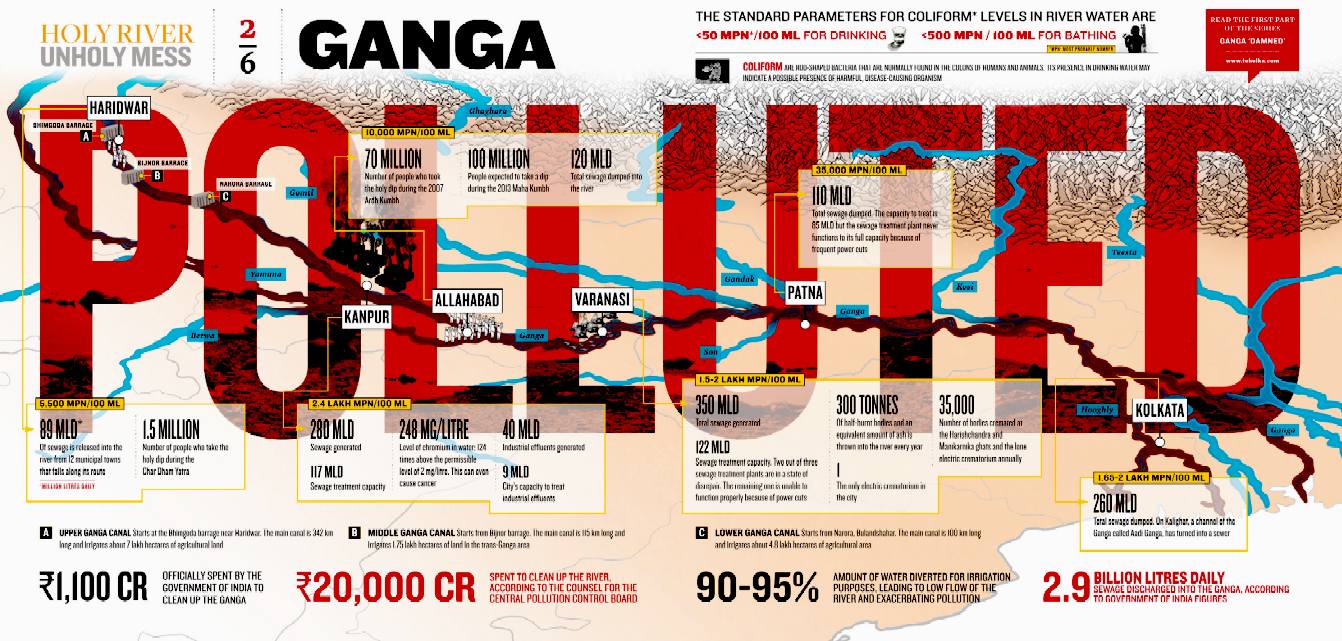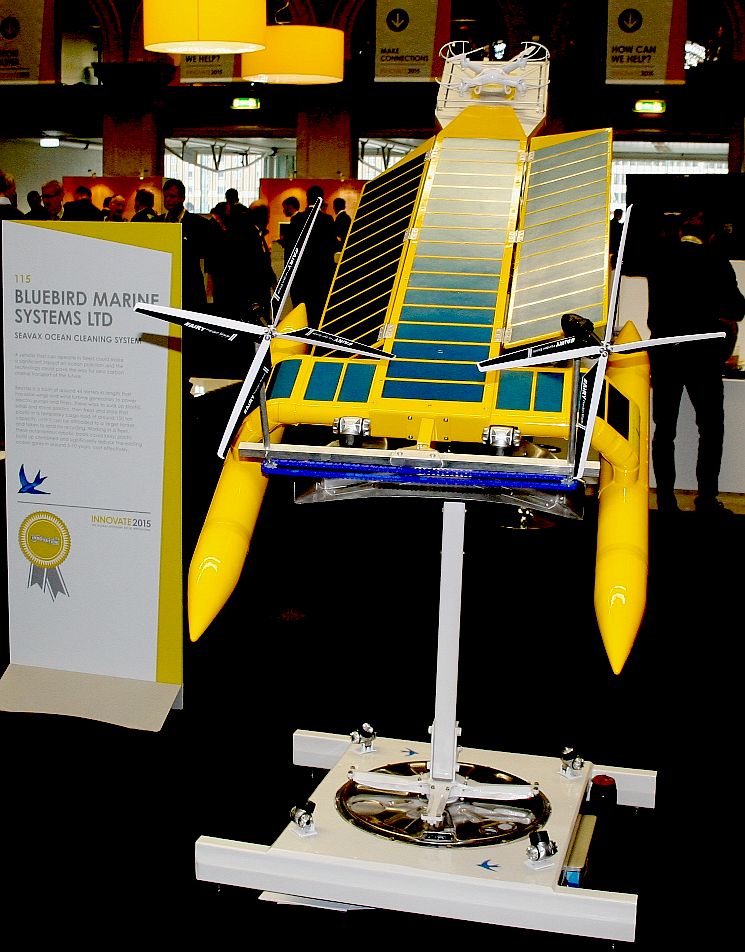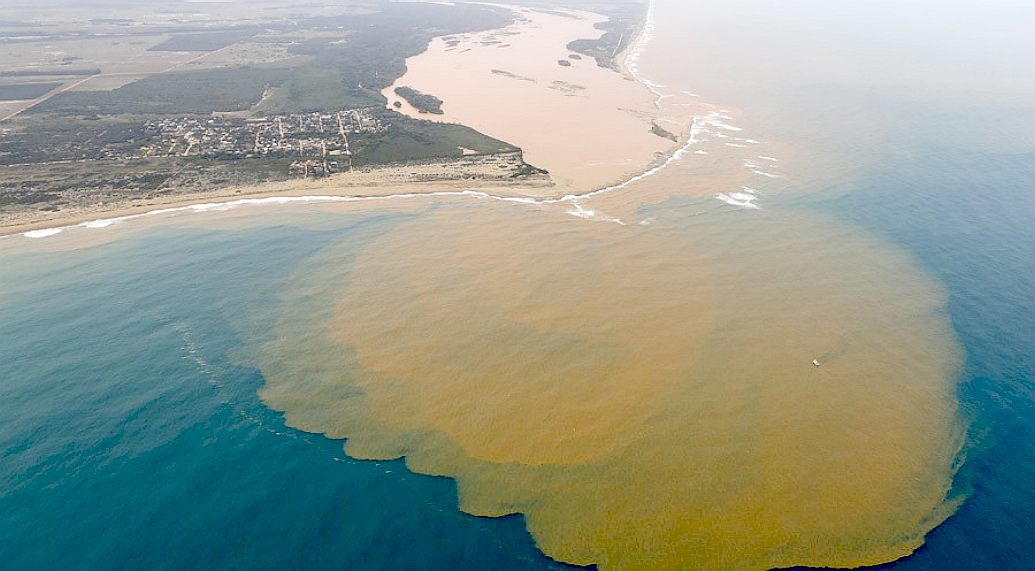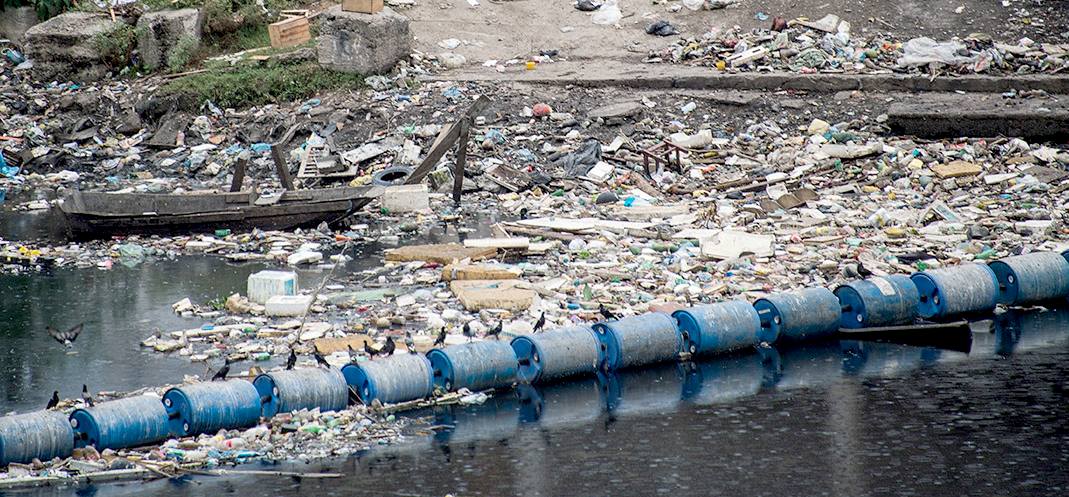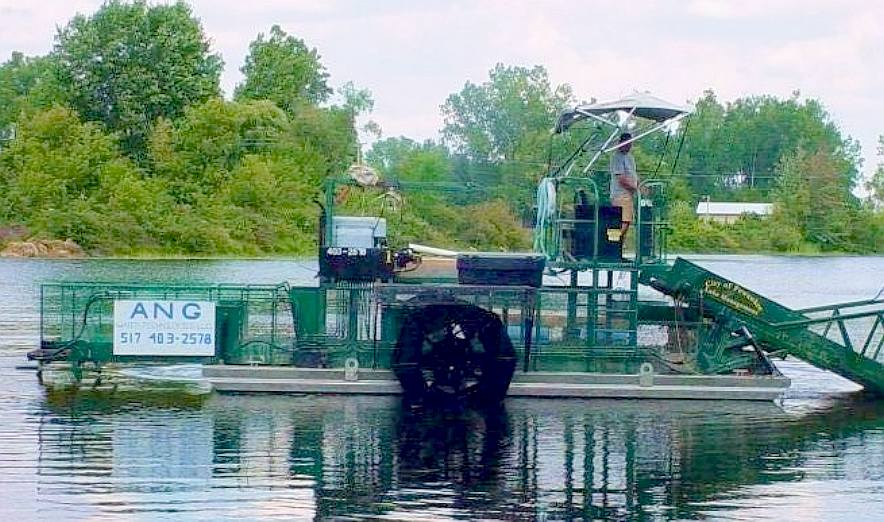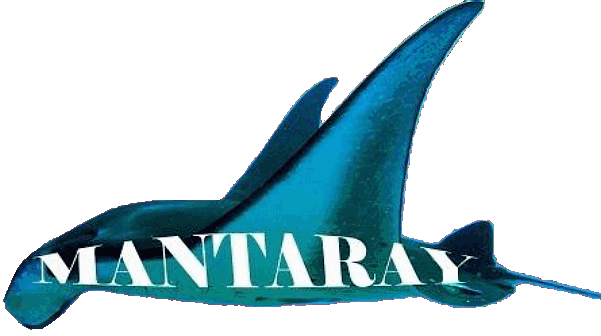|
SEAVAX™ & RIVERVAX™
SOLAR POWERED ANTI RIVER POLLUTION WORKBOATS
|
|
|
1 MILLION TONS A DAY - Approximately 1 billion litres of raw, untreated sewage, are dumped in the River Ganges on a daily basis. The amount has more than doubled in the last 20 years and experts predict another 100% increase in the following 20 years if unchecked.
SEAVAX RIVER CLEANING WORKBOATS
The SeaVax concept can be adapted to clean river waste as a RiverVax™ variation, provided that we know what kind of pollution we are targeting. Many rivers carry raw sewage discharges that would be unthinkable in Europe and the USA and would carry huge fines for the perpetrators. Asia in particular has little in the way of a reliable regulatory mechanism with untreated sewage and industrial waste being discharged directly into open rivers. Political systems in some locations may suffer from corruption, maladministration, negligence or all three, allowing chemical and leather factories, to continue to produce goods cheaply with little thought for the pollution consequences further downstream and out at sea. This is though the subject of much effort on the part of some administrations - in particular, India, with their clean up mission.
A lot of this is because the operators of factories are not aware of ocean pollution, and have used their rivers for so long that it may appear to them, inconceivable that what they have been doing for so long can be doing any harm.
Rather than tackle the political or educational aspects of the pollution problem, SeaVax™ may be deployed as RiverVax™ strategically to ease the situation. The presence of such vessels may intrigue the local population at first, but soon they will learn why these workboats are in their rivers - and that will mean that they might start to take an interest in why they are there - leading to a more informed attitude.
Whereas a major oil spillage is a rarity, river pollution is an everyday occurrence that is getting worse and that means more ocean pollution. We need clean rivers to be able to work our way up to a global Circular Economy. SeaVax may be able to help, because it is powered by energy harvested from nature, whatever is cleaned from the rivers is sustainable in terms of not adding to planet earth's global warming problems.
INNOVATION - The full size SeaVax will be capable of extracting plastic or oil from the ocean and surface and river bed pollution from many rivers. We hope to interest appropriate governments departments all over the world as potential partners to the SeaVax project. The above boat will be on display in London between the 9-10th of November 2015 at the Old Billingsgate exhibition halls. REVOLVING SHOW STAND - This is a picture of our display on November 10th 2015 at the Innovate 2015 event in London. For those of you interested in exhibitions and design, you can see a video of the stand revolving on our Homepage. This stand was constructed of recycled steel and other domestic machinery parts - as part of our example to all of sustainable practices in action.
SEAVAX - WATER TREATMENT CAPACITY
There are so many variables that come into play that we can only offer a rough guide as to the treatment capacity of a typical SeaVax vessel.
SeaVax has a capacity to generate around 44kW of solar energy per hour for at least 8 hours in sunny climates, with a top up of 40kW in windy conditions from two 20kW wind turbines to combine to yield 84kW of harvested energy in favorable conditions. Wind energy varies with the topography of the land, but is unlikely to be anywhere near that in the open ocean - and for this reason using SeaVax in rivers is likely to be less efficient that at sea.
Regardless, on average over a year, the energy harvested as a percentage of the maximum, should provide enough energy to treat 89.9 million liters or waste water per vessel + surface skimming of solids.
Alone this would not make a dent on the problems of, as an extreme example, the River Ganges as part of PM Narendra Modi's Swachh Bharat Abhiyan, but with a fleet of 10 vessels there would be a slight improvement locally on sewage with a marked improvement on surface appearance. With a fleet of 100 RiverVax things would start to look promising. One might expect a good surface appearance with speedy remedy for local problem areas.
With a fleet of 1,000 vessels, a quarter of the total waste in the Ganges could be treated. The wholesale cost of such an operation would be $5 billion. It is hardly surprising therefore that the $1 billion spent so far has not made that much difference. On current estimates it would take $20 billion to treat the billion liters a day being flushed into the Ganges - and where would all those boats be sited. That is another logistical problem that would need a feasibility study to come to terms with. We do not, therefore, suggest filling the Holy Mother Ganga with so many vessels.
While RiverVax™ may offer a temporary solution, we would recommend the installation of land based treatment works and a system to penalize factories and municipalities who do not make the effort to clean up their patch. Fortunately, part of this process has already begun.
Compared to The Ganges, Guanabara Bay, a current media hotspot due to the impending Olympic Games, would be a cakewalk for RiverVax™.
The World Health Organisation and World Bank might like to base their estimations on sustainably clean rivers on this information, or otherwise contact us if they would like a tailored estimate for any given river in the world.
BRAZIL - Rio Doce spilling out into the Atlantic. On the 5th of November 2015 a dam holding back waste water from an iron ore mine in Mariana, South-Eastern Brazil, owned by BHP Billiton and Vale collapsed, devastating a nearby town with mudslides, killing at least 17 people, injuring more than 50, causing enormous ecological damage, and threatening life along the river and the Atlantic sea near the mouth of the Rio Doce.
THE GUARDIAN 24 NOV 2015 - MINING WASTE REACHES BRAZILIAN COAST
A huge brown plume of mud and mining waste spread out along the coast of the Brazilian state of Espírito Santo on Monday, a little over two weeks after the collapse of a dam at an iron ore mine.
RIO DE JANEIRO - The Brazillian government have installed booms at the mouths of rivers feeding into Guanabara Bay, in the hope of limiting pollution for the Olympic Games. This is a short term solution that is simply storing up the problem for later. Unless the waste is collected and disposed of responsibly, or recycled sustainable, the problem can only get worse.
Concern over toxins in the mining residue has led the national water agency, ANA, to ban the use of the river water for human consumption. Hundreds of thousands of residents in the area are still dependent on supplies of bottled water.
RIVER CLEANING BOATS - The current state of the art is represented by these diesel powered machines. The problems with diesel as a fuel for cleaning large stretches of water is the cost of purchase and the cost to the environment. Simply put, it is not only cost ineffective but is also polluting, so contributing to climate change. What is needed is a zero carbon solution such as the RiverVax™ concept, that uses only energy harvested from nature for cleaning operations in rivers, and in the open oceans, as SeaVax™.
DIESEL
ENGINES - Produce Carbon monoxide (CO) and Nitrogen Oxide (NOx). CO is a short-lived greenhouse gas and also has an indirect radiative forcing effect by elevating concentrations of methane and tropospheric ozone through chemical reactions with other atmospheric pollutants.
ACID RAID - Rainfall is naturally acidic due to the presence of carbon dioxide in the atmosphere which combines with rainwater to form weak carbonic acid. However, the combustion of fossil fuels produces waste gases such as sulphur dioxide (SO2), oxides of nitrogen (collectively known as NOx) and to a lesser extent, chloride (Cl). These pollutants can be converted, through a series of complex chemical reactions, into sulphuric acid, nitric acid or hydrochloric acid, increasing the acidity of the rain or other type of precipitation.
ACID OCEANS - At least one-quarter of the carbon dioxide (CO2) released by burning coal, oil and gas doesn't stay in the air, but instead dissolves into the ocean. Since the beginning of the industrial era, the ocean has absorbed some 525 billion tons of CO2 from the atmosphere, presently around 22 million tons per day. NOx emissions from marine diesels contribute to ground level ozone, PM, eutrophication , acid deposition, nitrification and indirect effects that contribute to global warming.
LINKS
The Guardian environment bp oil spill The Guardian 2015 October 29 Gulf oil spill transocean and states agree millions in compensation TheGuardian 2015 September 11 Goldman Sachs says oil could fall to $20 dollars a barrel Irrigation calculators general required water pump power RT news Brazil toxic mud ecology Youtube watch robot river cleaning model http://www.miss-ocean.com/Media_Press_Articles/Swachh_Bharat_Abhiyan.htm https://www.youtube.com/watch?v=5IiRpAI7zoY http://www.theguardian.com/world/2015/nov/23/brazil-dam-collapse-mining-waste-reaches-ocean-rio-doce https://www.rt.com/news/323325-brazil-toxic-mud-ecology/ http://irrigation.wsu.edu/Content/Calculators/General/Required-Water-Pump-HP.php http://www.emexlondon.com/ http://www.emexlondon.com/ https://www.spillcon.com/ http://www.interspill.org/ http://www.theguardian.com/business/2015/sep/11/goldman-sachs-says-oil-could-fall-to-20-dollars-a-barrel http://www.iea.org/ http://www.deepwater.com/ http://www.theguardian.com/environment/bp-oil-spill http://www.theguardian.com/environment/2015/oct/29/gulf-oil-spill-transocean-and-states-agree-millions-in-compensation
ACIDIFICATION - ADRIATIC - ARCTIC - ATLANTIC - BALTIC - BAY BENGAL - BERING - CARIBBEAN - CORAL - EAST CHINA ENGLISH CH - GOC - GUANABARA - GULF GUINEA - GULF MEXICO - INDIAN - IOC - IRC - MEDITERRANEAN - NORTH SEA - PACIFIC - PERSIAN GULF - SEA JAPAN - STH CHINA - PLASTIC - PLANKTON - PLASTIC OCEANS - SEA LEVEL RISE - UNCLOS - UNEP - WOC - WWF
AMAZON - BURIGANGA - CITARUM - CONGO - CUYAHOGA - GANGES - IRTYSH - JORDAN - LENA - MANTANZA-RIACHUELO MARILAO
- MEKONG - MISSISSIPPI - NIGER - NILE - PARANA - PASIG - SARNO - THAMES -
YANGTZE - YAMUNA - YELLOW
Youtube Robot River Cleaning Model
|
|
|
This website is Copyright © 2016 Bluebird Marine Systems Ltd. The names Bluebird™, Bluefish™, Miss Ocean™, RiverVax™, SeaNet™, SeaVax™ and the blue bird and fish in flight logos are trademarks. CONTACTS The color blue is a protected feature of the trademarks.
|
